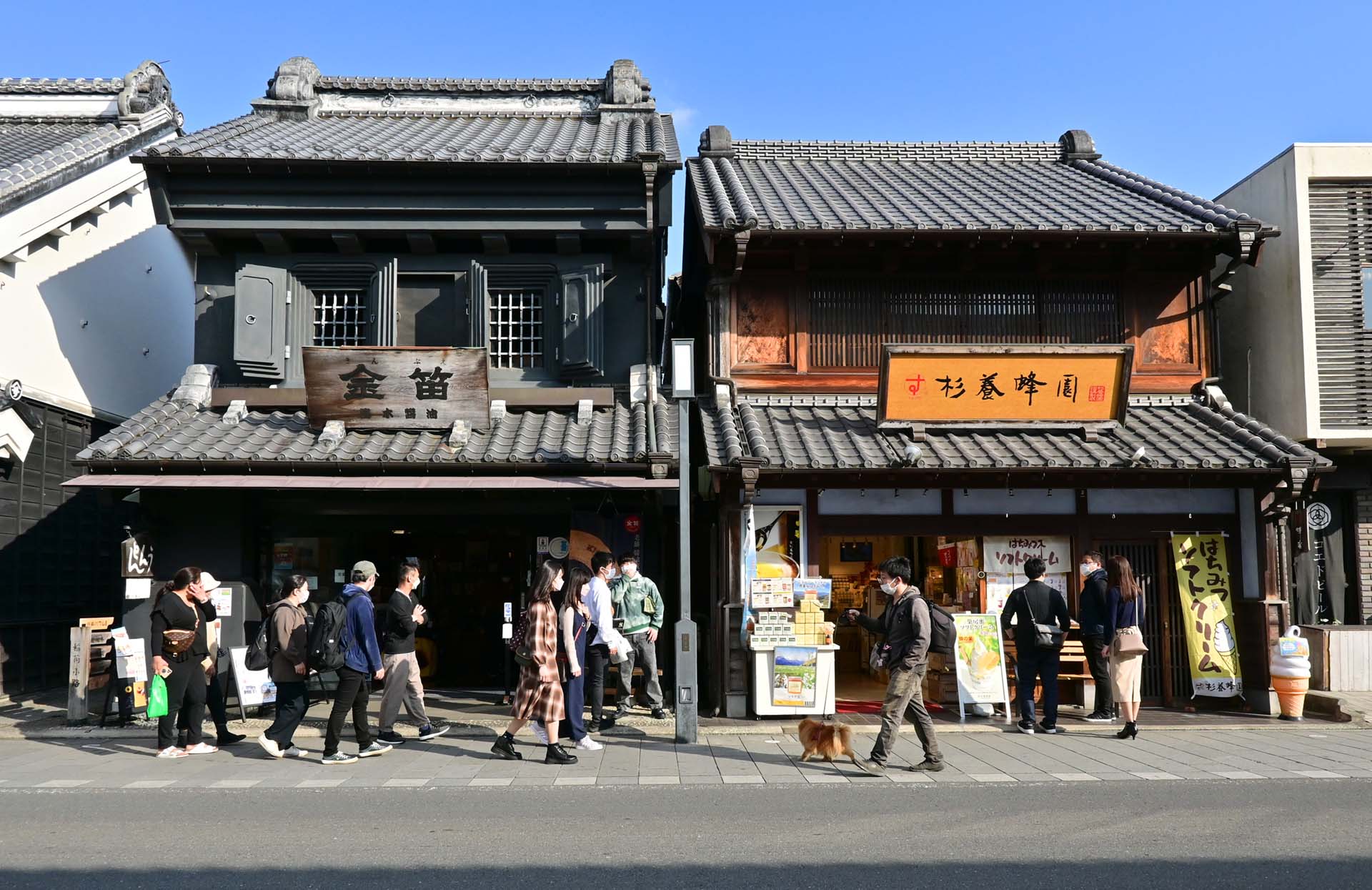During the Edo Period, the only way to travel between the capital and other parts of Japan was by a series of set routes called the kaido. Samurai, merchants, and pilgrims in Edo-era Japan would travel along the five main kaido from Nihonbashi in the centre of Tokyo (then called Edo). If you have a few days to spend in Tokyo, you can easily mix up your trip with several short breaks from the capital to see some of the traditional sights and delights that sprouted around the kaido trails during the Edo period.
The kaido of the Edo period left behind a rich legacy of history, culture, and a wealth of delicious regional cuisine which can still be enjoyed today. The old routes are also rich in stunning natural beauty, which can make for a wonderful quick escape from the city. This four-day itinerary explores just some of the many fascinating towns and regions that are within easy reach via the train lines from Tokyo to the neighbouring prefectures of Saitama and Yamanashi and back again.
Day 1: Kawagoe and Chichibu
The historic city of Kawagoe (川越) is less than an hour from Tokyo by train. During the Edo period, Kawagoe was a prosperous trading town connected to Tokyo by the Kawagoe Kaido. Today, Kawagoe remains rich in Edo period character, charm, and traditions.
Exploring the Traditional Japanese Storehouses of Kurazukuri
The most obvious signs of Kawagoe’s wealth during the Edo period are the historic shophouses that still stand in Kurazukuri (蔵造りの町並み, Kurazukuri no Machinami) in the centre of Kawagoe. The grandeur and scale of the architecture of the shops in Kurazukuri reveal just how well-off some local merchants became.
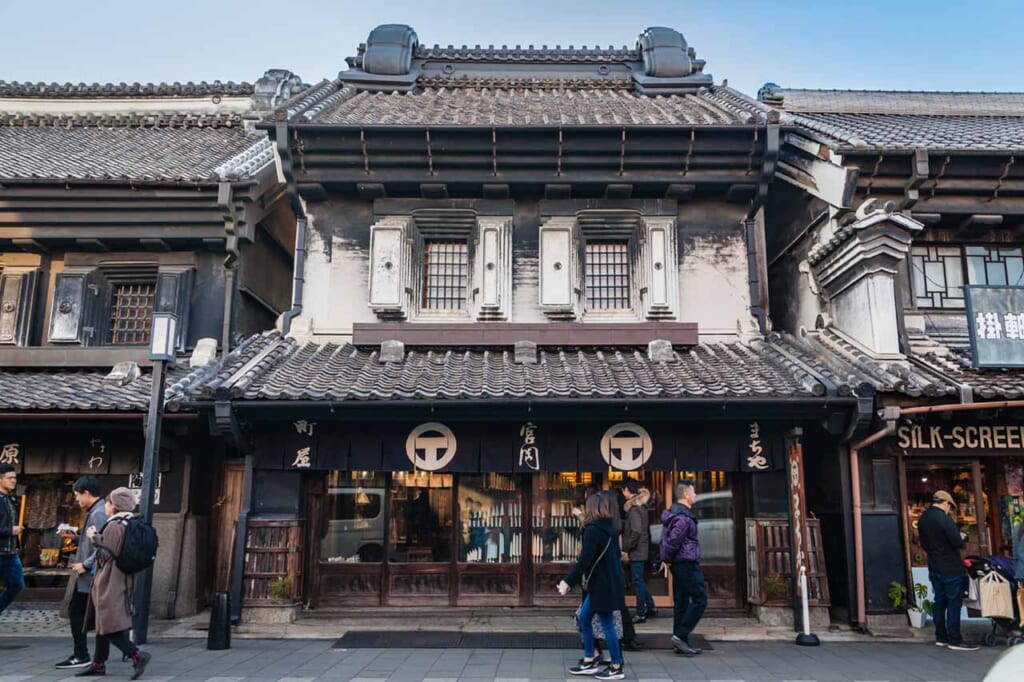
Many of the shophouses in Kurazukuri are built in a unique architectural style used for traditional Japanese warehouses, hence the area’s nickname, the Warehouse District. Many buildings are made from thick walls of clay instead of wood. Much of Kawagoe was severely damaged by fire in the town in 1893. As fire was an ever-present threat in Edo-era Japan, many of Kawagoe’s merchants built their shophouses from clay rather than wood to reduce the risk of damage should fire break out.
That such a vast number of Kurazukuri’s buildings remain is a testament to their strength and design, surviving the numerous fires and earthquakes that have affected Kawagoe since they were built. In 1999, the Japanese government selected Kurazukuri as one of the Important Preservation Districts for Groups of Traditional Buildings. The area has also been declared one of Japan’s 100 most beautiful historical sites.
Toki no kane (Time Bell Tower), Kawagoe’s Famous Landmark
Just off Kurazakuri’s main street are Kanetsuki Street (鐘つき通り, Kanetsuki-dori) and the Toki no kane, a 16-meter tall bell tower that is Kawagoe’s most famous landmark. The original bell tower was built between 1627 and 1634 in its present location, though the current version dates from 1893, rebuilt after the Great Kawagoe Fire.
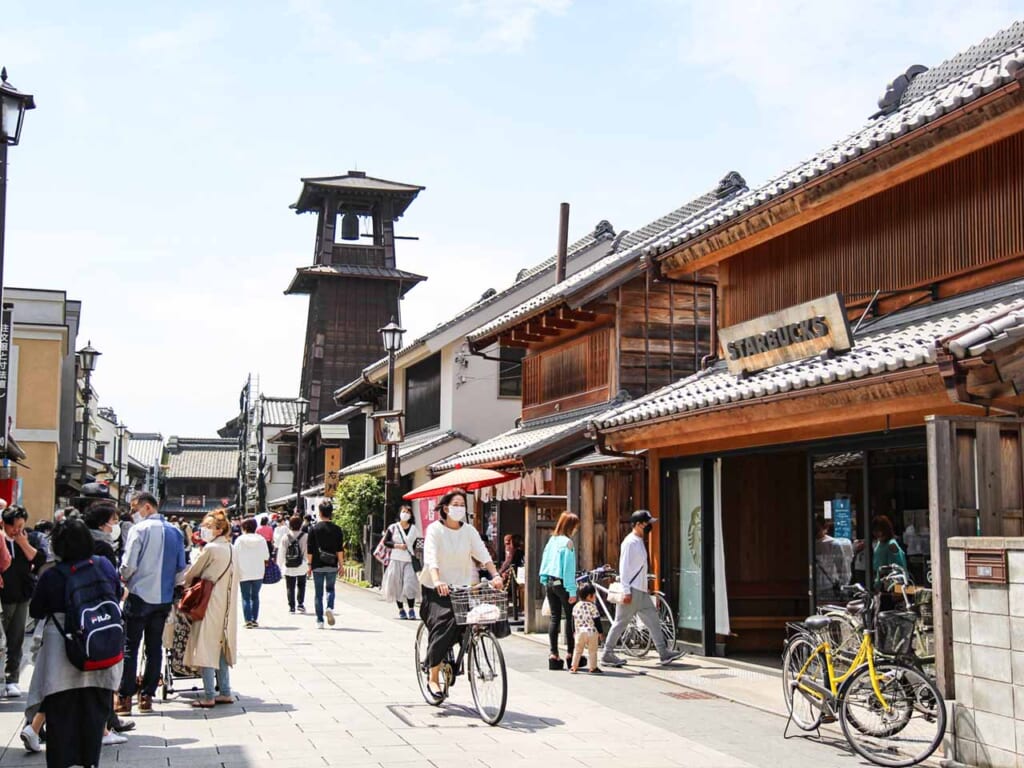
The three-story bell tower chimes four times a day and has been declared one of the 100 Soundscapes of Japan to Preserve by Japan’s Environment Agency.
Sweet and Savory Japanese Treats on Kashiya Yokocho
Also in the centre of Kawagoe is Kashiya Yokocho (菓子屋横丁, Kashiya Yokocho), also known as Candy Alley. As the name suggests, this narrow street is lined with around thirty confectionary shops specializing in traditional Japanese sweets and snacks. This is a great place to sample some good old-fashioned Japanese homemade candy and a selection of savoury treats, all with a healthy dose of nostalgia.
Soba Lunch in Kawagoe
When the time comes for something a little more filling, make your way to Teuchi Soba Kawagoe Hasumi (手打ちそば川越はすみ) for a delicious soba meal. Established in 1976, Teuchi Soba Kawagoe Hasumi is located inside a beautiful traditional Japanese restaurant with a choice of tatami or table seats. Teuchi Soba Kawagoe Hasumi is famous in Kawagoe for its homemade soba and udon, specializing in delicious traditional dishes served with slices of duck.
Sample Sake in Chichibu’s Local Breweries
After lunch, take the train from Kawagoe to Chichibu, located beneath the mountains to the very far west of Saitama. Chichibu is renowned for the many different types of alcoholic drinks produced in the region, brewed using impeccably high-quality local water. Beer, whisky, sake, wine, shochu, liqueur, and doburoku are all produced by various breweries in Chichibu, one of the few places in Japan where all seven drink types are made.
There are numerous spots in Chichibu where you can sample local tipples, including some of the area’s long-established sake breweries. In the city’s centre is Buko Shuzo Brewery, housed inside a 270-year-old sake shop. Buko Shuzo offers tours of the brewery, which has won countless awards for its sake over many years.
You can also discover what goes into making award-winning sake at Chichibu Nishiki Sake Brewing Forest (秩父錦 酒づくりの森). Established in 1749, the Chichibu Nishiki brewery is located on the city’s edge and features a museum about the company’s history and its sake.
Stay Overnight at Kamenoi Hotel Nagatoro Yorii
Whilst amongst Saitama’s clean air and mountains, treat yourself to a night in one of the region’s best hot spring hotels. Located in the town of Yorii, around 40 minutes north of Chichibu by train, the Kamenoi Hotel Nagatoro Yorii boasts a range of spacious Japanese and Western-style rooms and public indoor and outdoor baths with sumptuous views of the surrounding scenery.
Day 2: Pilgrim Routes and Riverboat Rides in Saitama
Fully rested and recuperated, return to Chichibu by train the following morning to explore some of the great outdoors.
Hike Part of the Chichibu Fudasho
Start the day with a short hike along part of the Chichibu Fudasho. Also known as the Chichibu pilgrimage route, this historic trail connects 34 temples dedicated to Kannon, the Goddess of Mercy. Pilgrims have trekked along the 100 kilometres long route for over 500 years.
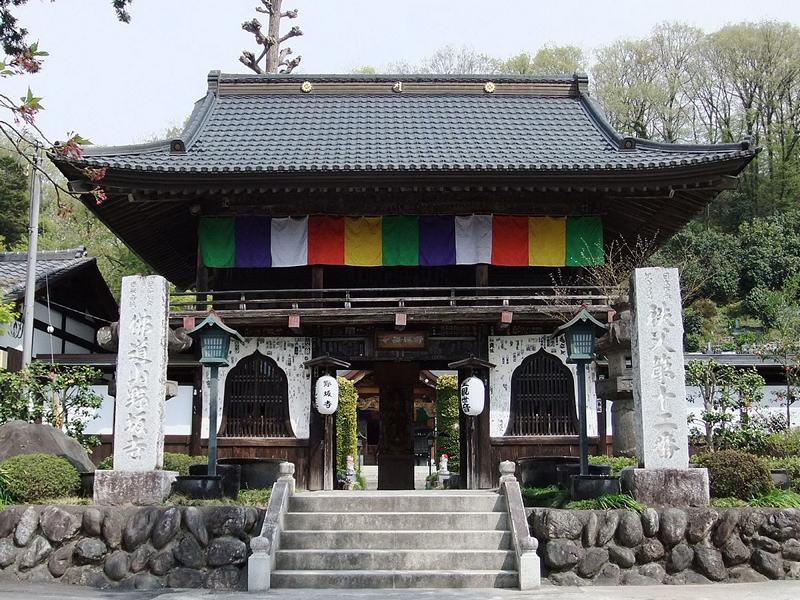
Whilst it takes several days to hike the entire Chichibu Fudasho, many people walk smaller sections of the route. These shorter walks pass through some of the beautifully picturesque Japanese countrysides before venturing along ancient forested paths with incredible mountain views. They also take in a handful of the historic temples pilgrims have visited for centuries.
An easy and enjoyable walk of the Chichibu Fudasho is a section known as the Nagaonemichi Way between the 21st and 23rd temples of the route. The best place to start the Nagaonemichi Way is from Onohara Station (大野原駅, Onohara-eki). From there, cross the Arakawa River (荒川, Arakawa) via the Old Chichibu Bridge to reach Kanonji, the 21st temple of the route. It’s a five-kilometre walk through gorgeous countryside and along picturesque mountain trails between the Kanonji and Ongakuji, the 23rd temple of Chichibu Fudasho.
Take the Train to Nagatoro Along the Chichibu Railway Local Line
Once you reach Ongakuji, it’s around a 40-minute walk back to Chichibu Station (秩父駅). From here, take a train along the Chichibu Railway Local Line to Nagatoro (長瀞町, Nagatoro-machi) for even more adventure by sailing along the Arakawa River. From Chichibu Station, it’s a twenty-minute train ride along the Chichibu Line to Nagatoro Station (長瀞駅), passing through the spellbinding northern Saitama.
A convenient way to save money on fares on the Chichibu Railway is to buy the Chichibu Railway Freepass, a discounted digital ticket that can be bought easily using the Chichibu Railway Emot service. Simply scan the QR code on your smartphone, enter your payment details, and a digital ticket will be created, giving you unlimited train rides on the Chichibu Railway in a single day.
Set Sail Along the Arakawa River
Several operators run boat trips along the Arakawa River near Nagatoro. This stretch of the Arakawa River passes through a stunningly picturesque area of Saitama, designated as a National Place of Scenic Beauty.
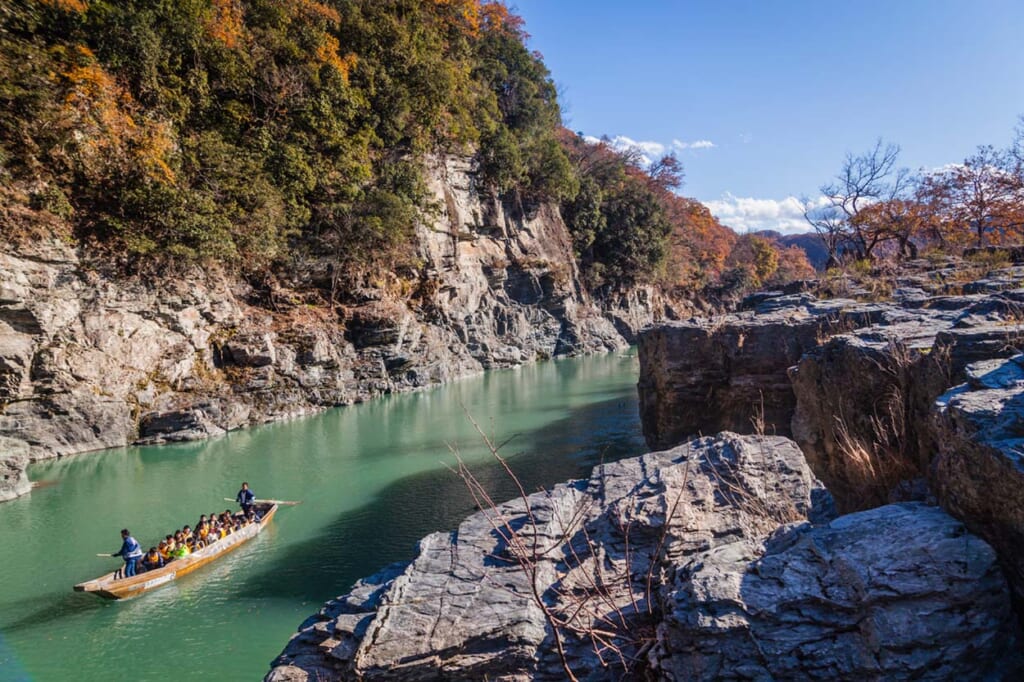
Taking a boat ride down the river is a particularly enthralling way to enjoy the area’s outstanding scenic beauty. There are two boating courses along the river, some with powerful rapids that the boatmen navigate with plenty of skill. Each course has beautiful views of the mountains and valleys that frame the river.
Lunch of Soba Noodles at Yokomachi Tsu
You’ll be ready for a hearty lunch following such an active morning. Next, head back on the Chichibu Railway at Nagatoro Station and ride one stop north to Nogami Station (野上駅, Nogami-eki), from where you can reach Yokomachi Tsu (よこまち 津). Primarily known for its soba noodles, Yokomachi Tsu has an extensive menu of beautifully prepared Japanese dishes, including fresh seafood sashimi and crispy tempura.
Stay Overnight at Henn na Hotel in Ginza
After a restorative lunch, return by train to Tokyo. On arrival in Tokyo, head to Ginza and check in at the Henn na Hotel, which is perfectly located for exploring some of the neighbouring areas of Tokyo. The word hen (変) in the hotel’s name means “change.” The concept of the hotel is to keep changing to find even better ways to make the guests feel comfortable. Henn na Hotel is famous for the animatronic robots that man the reception desks. This means you can check in and out without meeting any of the hotel’s staff. Very convenient in times of a pandemic.
Once checked in and settled, if you need somewhere to eat, go to Shuns, a kushiage restaurant located in the heart of Ginza. Kushiage is a popular Japanese dish of deep-fried skewers of various meats, seafood, and vegetables accompanied by a range of dipping sauces.
Day 3: Tokyo and Mount Takao
After your previous day on Saitama’s pilgrimage routes and riverboat rides, spend your third day exploring the city offerings in and around Tokyo.
Exploring Tsukiji Outside Market
Spend the early morning of day three exploring the fascinating areas near Ginza. Just a ten-minute walk from Henn na Hotel is the Tsukiji Outer Market. Tokyo’s famous Tsukiji Fish Market (with its crack-of-dawn tuna auctions) recently relocated from Tsukiji to a brand new home in Toyosu (豊洲). However, the long-standing Tsukiji Outer Market remains next to where the old market used to be.
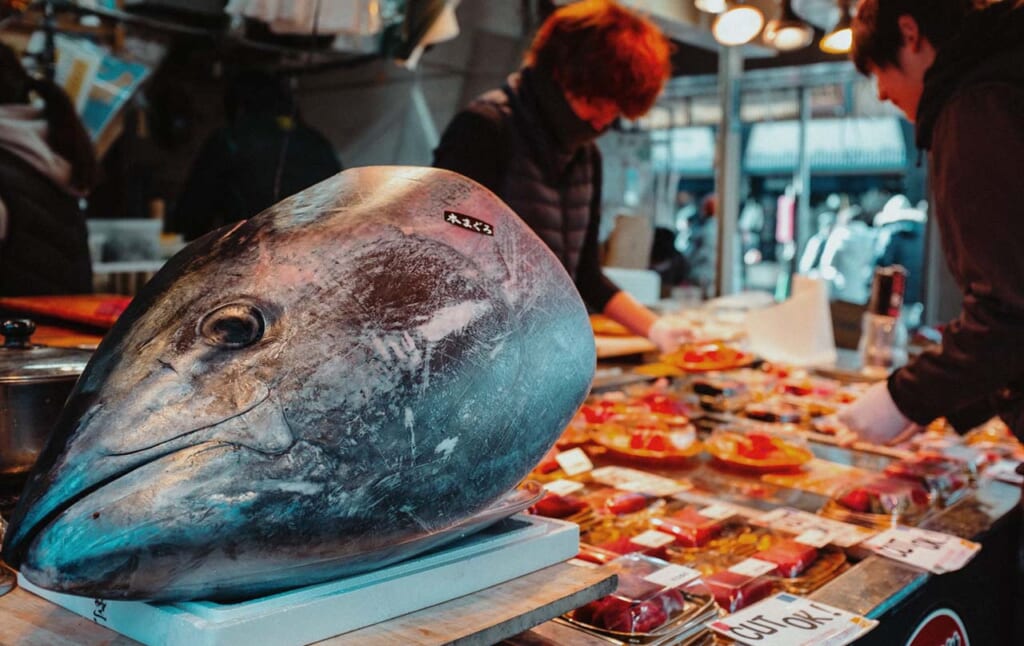
Tsukiji Outer Market is a bustling network of alleys and lanes home to close to 400 shops and restaurants that retain its uniquely vibrant atmosphere. Tsukiji Outer Market is still one of the best places to enjoy some of the freshest and most delicious seafood in Tokyo. You’ll find seafood in all its forms, with countless restaurants specializing in everything from sushi, sashimi, donburi, eel and a whole lot more. There are also shops that sell razor-sharp Japanese knives and other kitchen utensils. If seafood is not your thing, you can find fresh vegetables and fruits in one of the halls near the main gate of the inner market.
Explore the Historical Architectural Sights and Landmarks of Nihonbashi on Foot
From Tsukiji Station, it’s only two stops on the Hibiya Metro line to Nihonbashi Station (日本橋駅, Nihonbashi-eki). Nihonbashi was once the starting point for the five main kaido routes that led from Tokyo. Today there are several historic buildings and landmarks located around Nihonbashi.
One of the most famous is the bronze statue of Kirin, a winged mythical creature that stands on a central pillar of Nihonbashi Bridge. The current bridge dates from the early 20th century, but the first wooden Nihonbashi Bridge was built in 1603, the first year of the Edo period and has been rebuilt many times following fires and earthquakes. The current bridge is believed to be the 20th version.
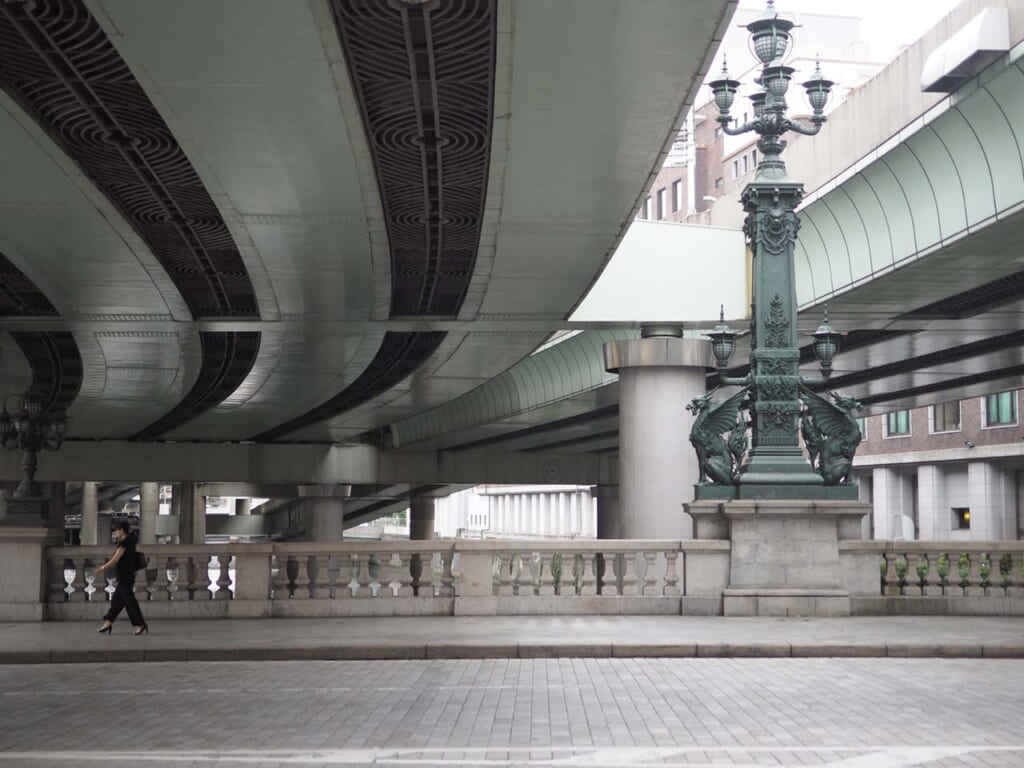
Nearby is the original building of the Bank of Japan, originally built in 1896, designated as an Important Cultural Property. The building wouldn’t look out of place in a major European city like London or Paris, with its ornate Western-inspired style of architecture that was popular in Japan during the Meiji period (1968-1912).
If you’re in the mood for a little retail therapy, you’ll find the upscale shopping mall of Coredo Nihonbashi next to Nihonbashi Metro Station. Coredo Nihonbashi features a wealth of fashion and lifestyle stores, most of which cater to women. Alongside the many women’s fashion stores, there are also numerous cosmetics stores and nail and beauty salons.
From Nihonbashi, make your way over to Tokyo Station. More than just a place of arrival and departure, Tokyo Station is a landmark in its own right. The striking Marunouchi Station Building was built in 1914. Badly damaged in the Second World War, the station was restored between 1945 and 1947. Further conservation and restoration work was carried out between 2007 to 2012 to restore the building to its original appearance.
Escape the City to Mount Takao with a Hike and Local Eel Lunch
In the afternoon, take the train from Tokyo Station to Takao Station (高尾駅) on the JR Chuo Line (approx. 1 hour) for another trip out of town to bask in the breathtaking scenery in the mountains on the edge of Tokyo. Arriving in time for a spot of lunch, stop in at Unagi Kamameshi Fujita (うなぎ釜めし藤田), a local eel restaurant located about a 5-minute walk from Takao Station. A favourite of residents for over 40 years, specialities include unadon, rice topped with eel, and unagi butter grilled eel.
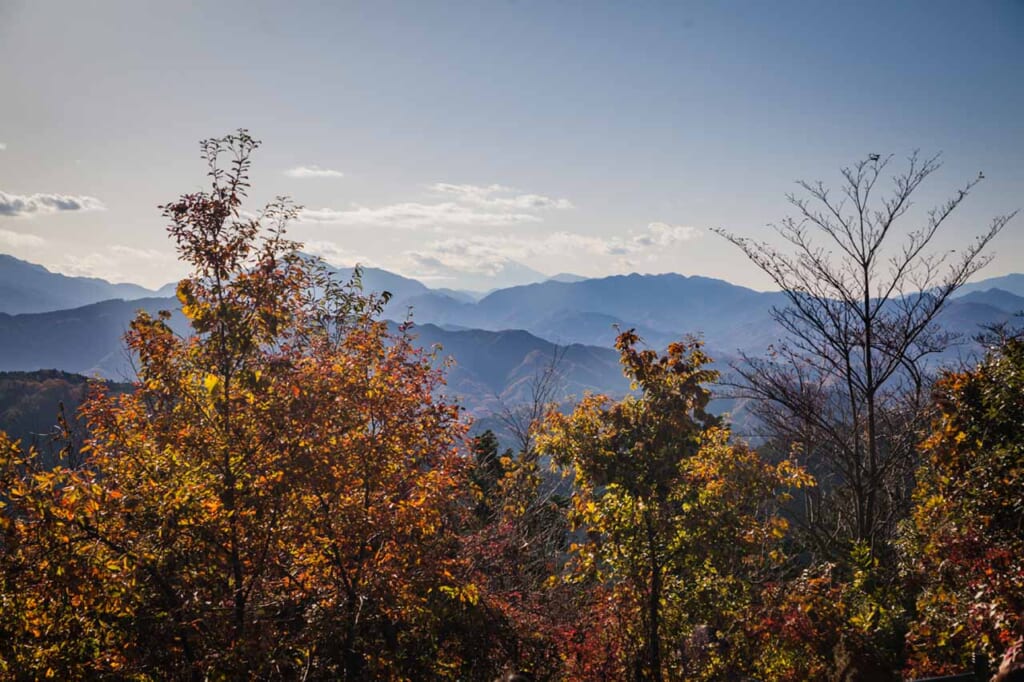
Mount Takao is one of the most popular nature spots near Tokyo, with over 3 million visitors annually. Easy to reach and blessed with fabulous natural scenery and views of Tokyo, Mount Takao is a relatively easy climb, made easier by the cable car gliding to the halfway point of the mountain in just six minutes.
Single and round-trip tickets for the Mount Takao cable car can easily be bought on your smartphone in advance via the TAMa-GO website (JP only).
From the higher cable car station, it’s a relatively easy hike to the summit of Mount Takao. The trails lead through spectacular mountain forests and pass by several stunning temples and shrines, most notably Yakuo-in (髙尾山薬王院, Takao-san Yakuo-in), a sprawling temple that dates from 744. Many stalls sell green tea and traditional snacks such as dango along the way. At the top of Mount Takao, alongside several soba noodle stalls, there are stunning views of the tip of Mount Fuji.
Stay Overnight in Isawa Hot Spring Town
Once you’ve returned to the base of Mount Takao, head back to Takao Station. Take the train to Isawa (石和町), a hot spring town in the neighbouring Yamanashi prefecture. Tomorrow you’ll be exploring more of the area, but for now, check in to the Isawa View Hotel. Here, you can relax and recover from a busy day by soaking in the hotel’s revitalizing onsen and indulging in exquisite kaiseki ryori, the most extravagantly prepared multi-course Japanese cuisine, paired with sensational sake.
Day 4: Wine Tasting in Katsunuma
Though most famous for sake and shochu, Japan also has a long-standing tradition of producing wine. Yamanashi prefecture is one of the major wine-producing regions in Japan, which is blessed with the perfect climate for growing grapes.
Sample Koshu City’s Locally Produced Wines
There are several places in nearby Katsunuma (勝沼) where you can see and sample a selection of locally produced Japanese wines. One of the most fascinating places to see locally-made wines is the Katsunuma Tunnel Wine Curve (勝沼トンネルワインカーヴ), a wine storage facility in an old 1,100 meter-long railway tunnel repurposed to store up to a million bottles of wine.
Built in 1903 as part of the Chuo Main Line, the 1,100-meter tunnel has a year-round temperature of 6–14°C and humidity of 45–65%, which are the perfect conditions for the long-term ageing of the locally made wine. You can take a peek inside the storage facility as the entrance area of the tunnel inside the wine caves can be toured by visitors.
Nearby, Katsunuma Winery (勝沼醸造) is located in a 140-year-old Japanese house not far from the Katsunuma Tunnel Wine Curve. Here you can enjoy a wine-tasting session and try a variety of the winery’s award-winning red and white wines. There are also winery tours, where you can learn about the cultivation and processing of grapes and how they are made into wine.
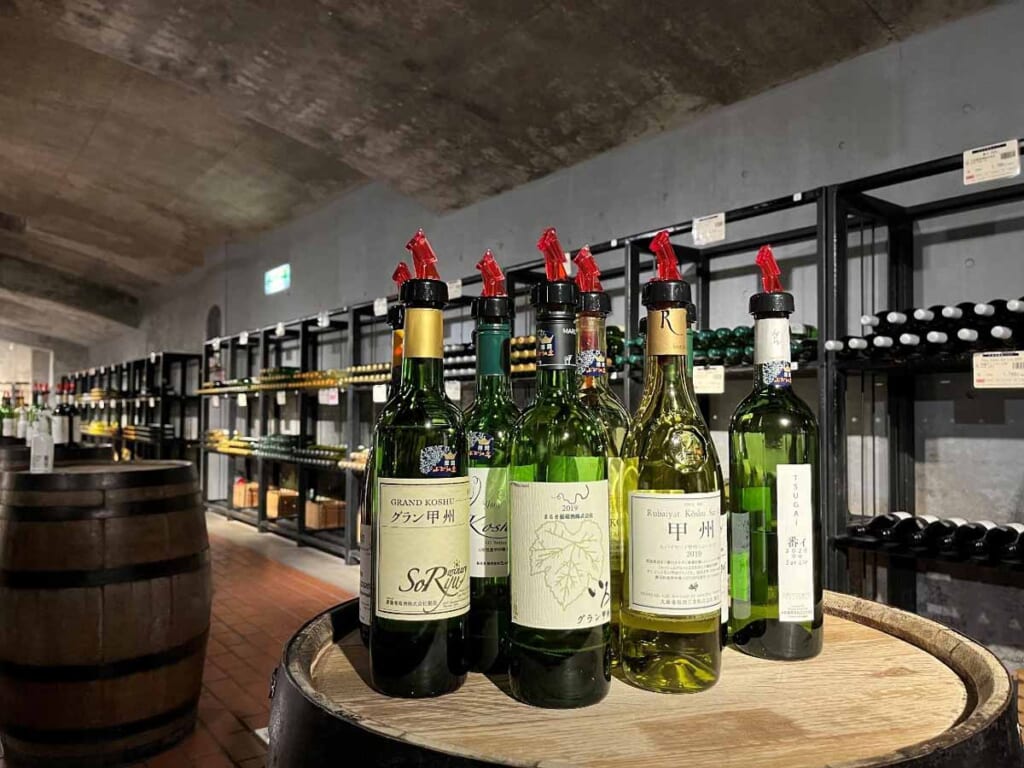
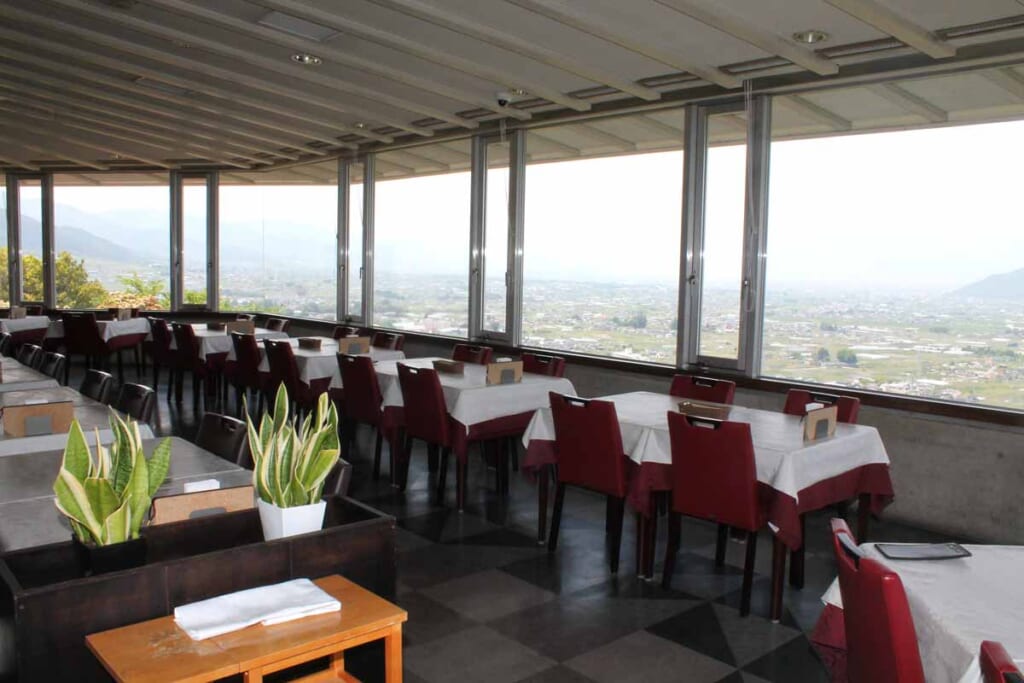
You can also enjoy a spot of wine tasting at Katsunuma Budo no Oka (ぶどうの丘), a winery and resort that also enjoys sensational 360-degree views of its vineyards. Here there are around 200 different wines displayed in a vast cellar that are available for visitors to taste and buy. The vineyard even has a hotel on site, complete with natural hot spring onsen that boasts a panoramic view of Japan’s Southern Alps. There’s also an excellent restaurant on site which serves food designed to compliment the Budo no Oka’s wines, along with a beautiful view of the vineyards below.
Return to Tokyo on the Limited Express KAIJI Train
In the afternoon, return to Tokyo by taking the JR Limited Express KAIJI train. This high-speed train will have you back in Shinjuku in central Tokyo in around two hours. You’ll also travel in comfort, as the Limited Express KAIJI train features a stylish interior design and essential amenities such as power outlets to charge your phone after a long day snapping selfies as you sip wine in such beautiful surroundings.
How to Get Around
All destinations listed in this article are accessible by train to the major and local stations in Saitama and Yamanashi prefectures.
There is much to explore amongst the many beautiful areas along old kaido roads that are easy to explore from Tokyo. Whether it’s the charm and traditions of the Japanese countryside, stunning mountain scenery or historic towns and cities filled with Edo period atmosphere, they are all within easy reach, particularly in the neighbouring prefectures of Saitama and Yamanashi. There are also plenty of wonderful local foods and drinks to tuck into once you’ve worked up an appetite hiking along ancient pilgrimage trails or nearby mountains.

Article sponsored by Kanto District Transport Bureau, with the support of Tokyo Convention & Visitors Bureau, Saitama Prefecture, Koshu City
Header image by Claudia Mitsubori


